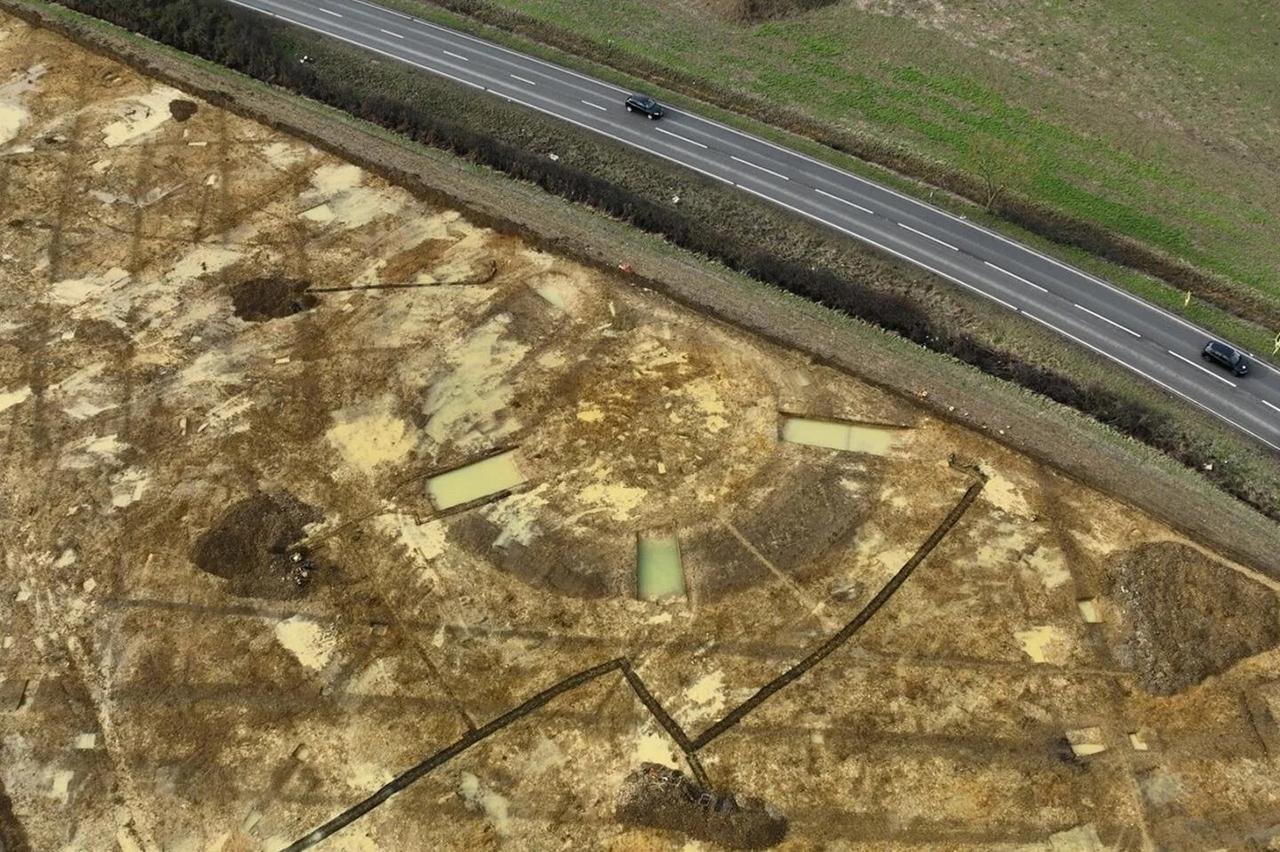Archaeologists from the Museum of London Archaeology (MOLA) have unearthed a moated medieval windmill during the construction of the National Highways A428 Black Cat to Caxton Gibbet improvement scheme in Bedfordshire, England. The windmill dates from between 1066 to 1485 during the medieval period.
 Aerial pH๏τo of the mill excavations. Credit: Museum of London Archaeology (MOLA)
Aerial pH๏τo of the mill excavations. Credit: Museum of London Archaeology (MOLA)
The windmill, once a symbol of power for the local lord of the manor, served as a crucial center for grinding grain. This structure is positioned on high ground surrounded by farmland. Villagers farmed the surrounding land, paying rent to the lord and providing grain for milling.
The windmill itself was a marvel of engineering for its time. Featuring a large central post, it operated as a sunken type of Post Mill, a design prevalent in Europe from the 1100s to 1200s. The central post, partly buried within a supporting mound, allowed for the orientation of the sails towards the wind, enabling efficient grain milling.
Despite the absence of physical remnants above ground, traces of the mill’s structure were discernible upon excavation. Excavations revealed the presence of a moat, a common feature for such mills, which collected water from the naturally wet area. This feature likely served to protect the mill and its valuable operations.
 A tired miller leaving their mill. courtesy of the British Library, Yates Thompson 13, f.176v/MOLA
A tired miller leaving their mill. courtesy of the British Library, Yates Thompson 13, f.176v/MOLA
The excavation yielded a plethora of artifacts, including pottery sherds, animal bones, iron nails, farming tools, and clay tobacco pipe stems. Notably, 17 pieces of millstones were discovered, including a distinctive ‘lava’ millstone imported from Germany, prized for its rough surface ideal for milling.
According to the Museum of London Archaeology, “The miller poured heavy sacks of grain into the hopper, which fed the grain between the two millstones. The top stone, called the runner stone, was moved by gears attached to the central post of the windmill, turning as the sails spun round in the wind.” This intricate process highlights the skill and craftsmanship required of medieval millers.
 A dressed ‘lava’ millstone found at the site. Credit: MOLA
A dressed ‘lava’ millstone found at the site. Credit: MOLA
As National Mills Weekend approaches, the unveiling of this medieval windmill provides a distinctive window into history.





